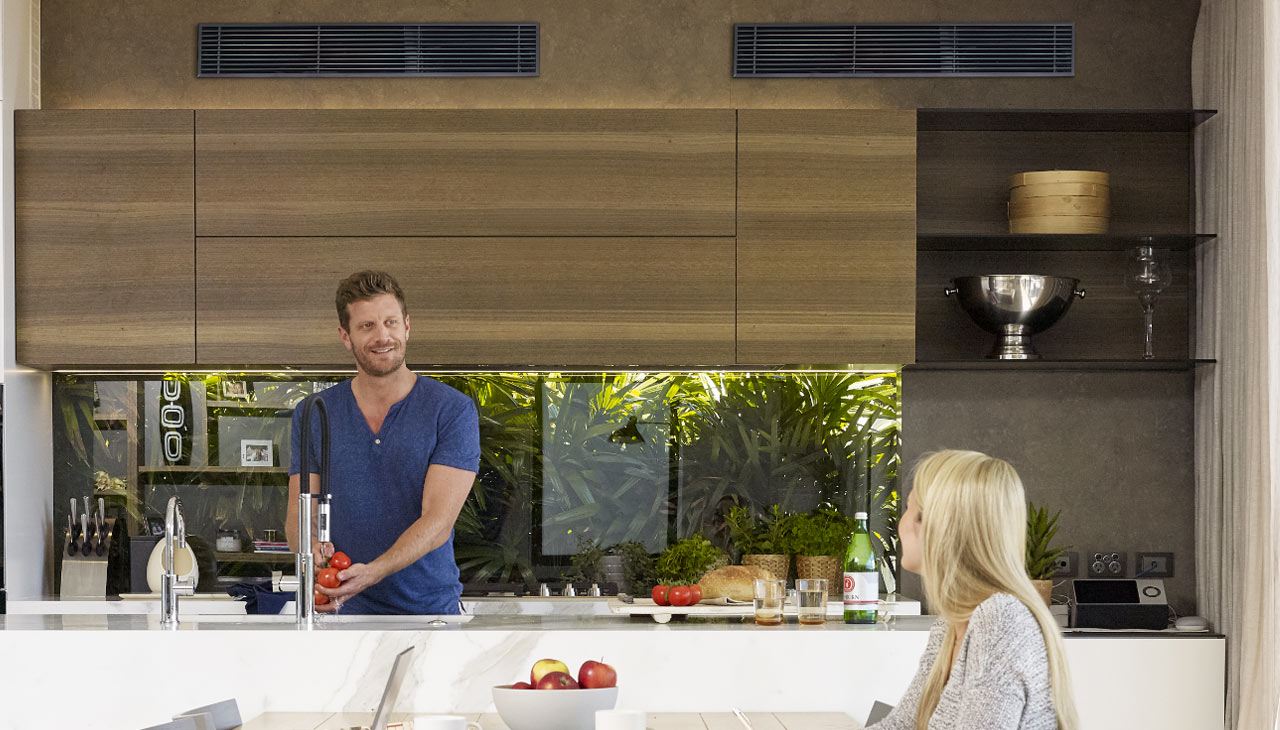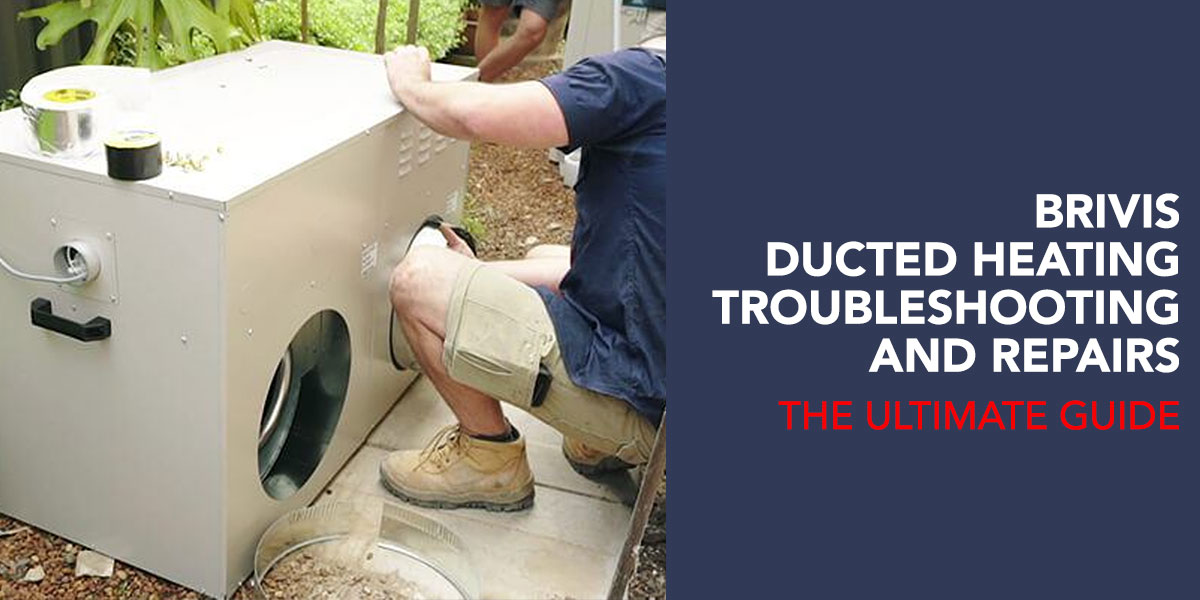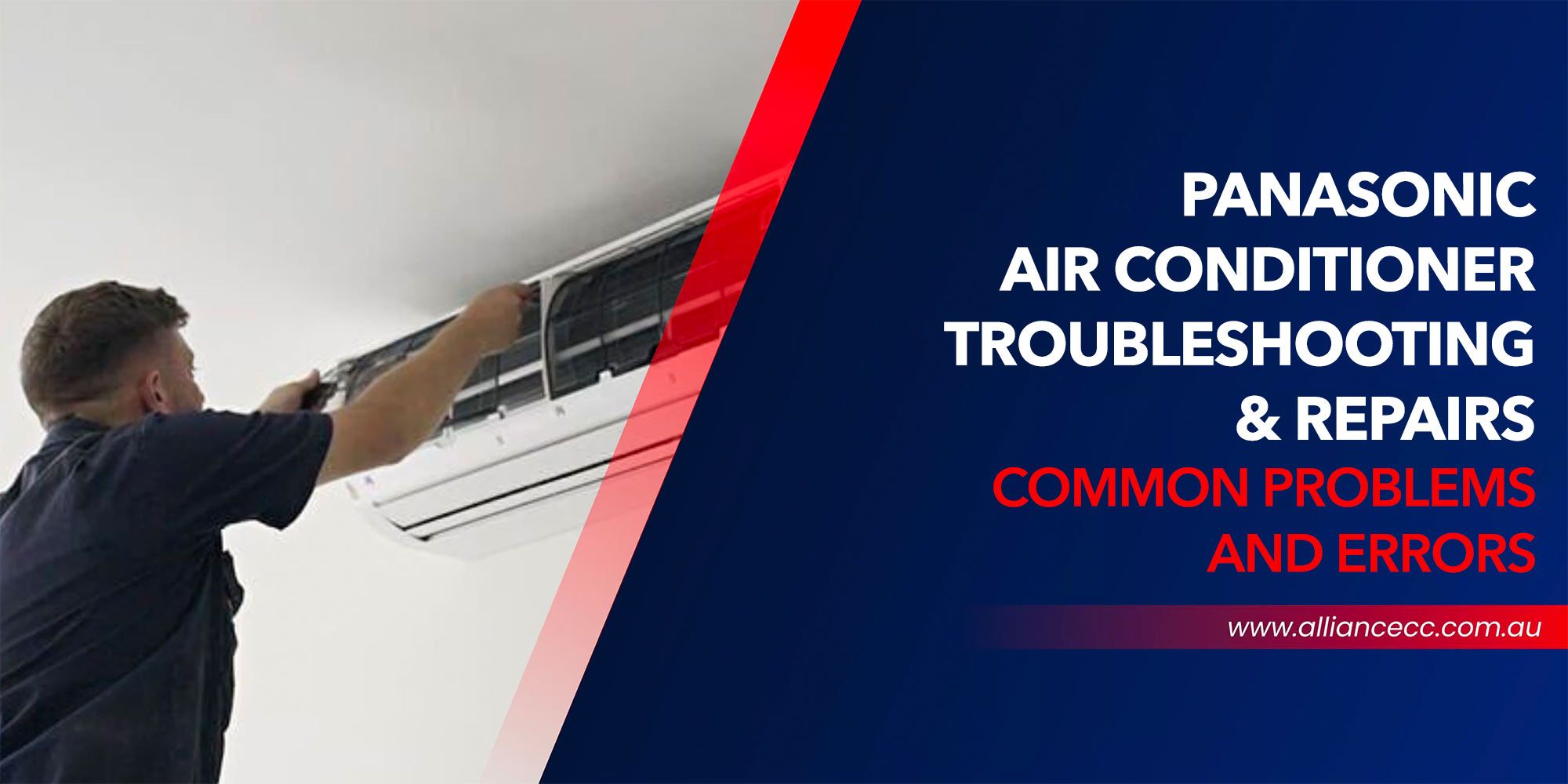
If you have a home with multiple rooms, the chances are that you use ducted air conditioning to keep you warm in the winter and cool in summer. But, how does ducted air conditioning work to keep your home comfortable?
Read along to learn how these reverse cycle ducted air conditioning systems function to ensure improved air quality in your home or business premises all year round.
How does ducted air conditioning work?
Ducted AC systems work by siphoning conditioned air from a central unit through a series of ducts and vents to the various rooms in the building. Usually, this central unit is concealed inside the ceiling cavity.
Fans in the AC system draw air from inside the rooms into the central air control unit for cooling or warming. They then blow conditioned air back into the living spaces through the ductwork and vents, keeping your home or premises comfortable.
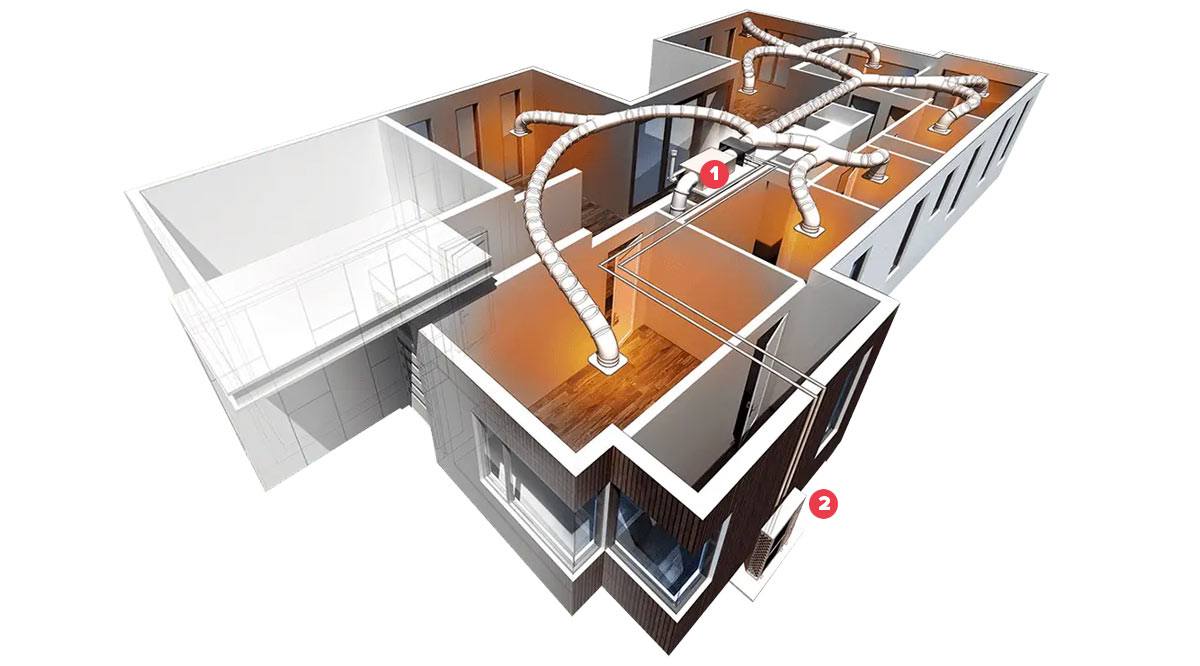
The air conditioning system consists of two main units.
- A condensing unit (with a compressor) located outside the building
- An indoor fan coil unit that sits inside the home’s ceiling or roof cavity
A system of pipes connects these two units, letting them work together to perform a refrigeration and air purification cycle.
The ductwork can run in the basement or attic to output conditioned air into various home or commercial property sections via a series of vents.
Most modern air conditioning systems also include a heating unit that warms the home during the cold winter months.
To better understand how such a system works, you will need to understand the different components.
Main components of a modern air conditioning system
A modern, integrated air conditioning system comprises four major components: a programmable thermostat, an indoor air-handling unit, a furnace, and a compressor or heat pump.
1. Thermostat
The air conditioning unit’s thermostat is the component used to control the system to help maintain or regulate temperatures.
It is regulating device that senses the room’s temperature and signals the other components of the AC system to perform their actions. These actions are necessary for maintaining the temperature at the desired set point.
The thermostat serves as the command center of your entire heating, ventilation, and air conditioning system. When the indoor temperature rises above or falls below the thermostat setting, the device signals the air conditioning unit to kick on or increase power.
2. Furnace
This is the component responsible for generating heat for your home or commercial space when the weather is cold. It performs this role by passing the air through a heat exchanger that warms it.
How ducted AC warms your home
When the indoor temperatures get too cold, the thermostat starts the fan motor. The system’s fan then begins drawing room air through the system of vents and ductwork.
The AC system passes the air through an air quality system that purifies it. This cleaner can be a filter in the furnace, or some other type of air cleaner, depending on what your system has.
The air also moves through a heat exchanger that warms it. After this process, the activity of the fans then blows the heated air back into the indoor space through ductwork and vents system. This warm air then makes your living space toasty.
Condensing unit (compressor) or heat pump
The AC compressor is the loud box located outside the building. It is responsible for pumping and spreading refrigerant throughout the air conditioning system.
The condensing unit sits outside the building to minimize noise disturbance and release the heat drawn from the cooled indoor air outside. The unit’s compression mechanism produces a lot of noise that would be unbearable to have within your living or workspace.
The fan system in your air conditioning unit passes air through the indoor unit—the evaporator coil. This evaporator is composed of several thin and very cold metal fins carrying the freezing refrigerant.
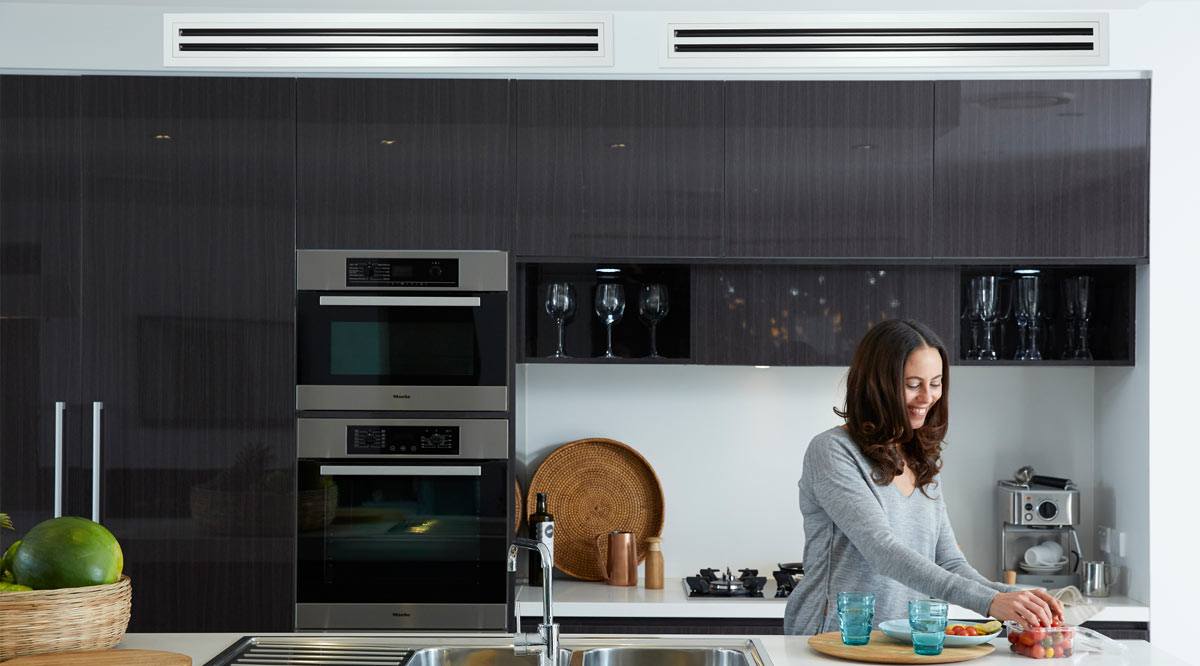
How ducted AC cools your home
When the thermostat senses the indoor air is too warm, it activates the air conditioner compressor. This device pumps refrigerant through a loop of piping that runs between the outdoor air conditioning unit and indoor cooling coil.
As the refrigerant passes through the cooling coil typically installed above the furnace, the cold evaporator coil extracts heat from the air circulating around it.
The furnace blower then sends the conditioned air into the living spaces through ductwork and vents system. This way, cool, conditioned air from the indoor fan coil unit returns to the room, lowering the indoor temperatures.
Meanwhile, the refrigerant absorbs the heat from the circulating indoor air and gets warm.
The warm refrigerant from the indoor unit is then drawn back into the outdoor unit for cooling. The compressor activity creates the pressure difference responsible for drawing in and pumping out the refrigerant.
The cooled refrigerant then recirculates through the indoor fan coil unit. This cycle continues as long as the air conditioner is running.
Technically, the evaporator coil moves the heat from the air coming from the building into the refrigerant. The fan system then blows the cooled air back into the living spaces through the ductwork.
Note: A ducted air conditioning system can have the option of including a fresh air intake that ensures your home has a constant supply of fresh, oxygenated air from outside.
Why do you need a ducted air conditioning system?
Several reasons make a ducted air conditioning system a superior choice. Let’s dive in a see some of these reasons.
Efficient and affordable air conditioning for large homes or workspaces
A ducted AC – also called a reverse cycle air conditioner – is ideal for large homes with several rooms. If your house has more than three bedrooms, a ducted system is likely the most efficient way to regulate your temperatures and keep your home comfortable.
You will need just a single unit instead of buying several ductless mini-split systems for each room in your home.
The system of ducts and vents means that the single AC system can sufficiently regulate the temperatures in each room in your home. All you may need are multiple thermostats for the various sections to receive conditioned air.
It allows for zone control.
A ducted AC lets you set up your system into various zones and control them each independently. For example, this option lets you use the AC only for occupied rooms or specific areas of your home that require air conditioning.
As a result, you have complete control, minimize wastage, and save on your energy bills.
Final thoughts
There are several options for conditioning the air in your home or business. Knowing how these systems work should help you make the most of each unit.
We hope this article helps shed some essential light on how a ducted air conditioning unit works and helps you make more informed decisions. If you have any thoughts or comments, please share them with us in the comments section.
